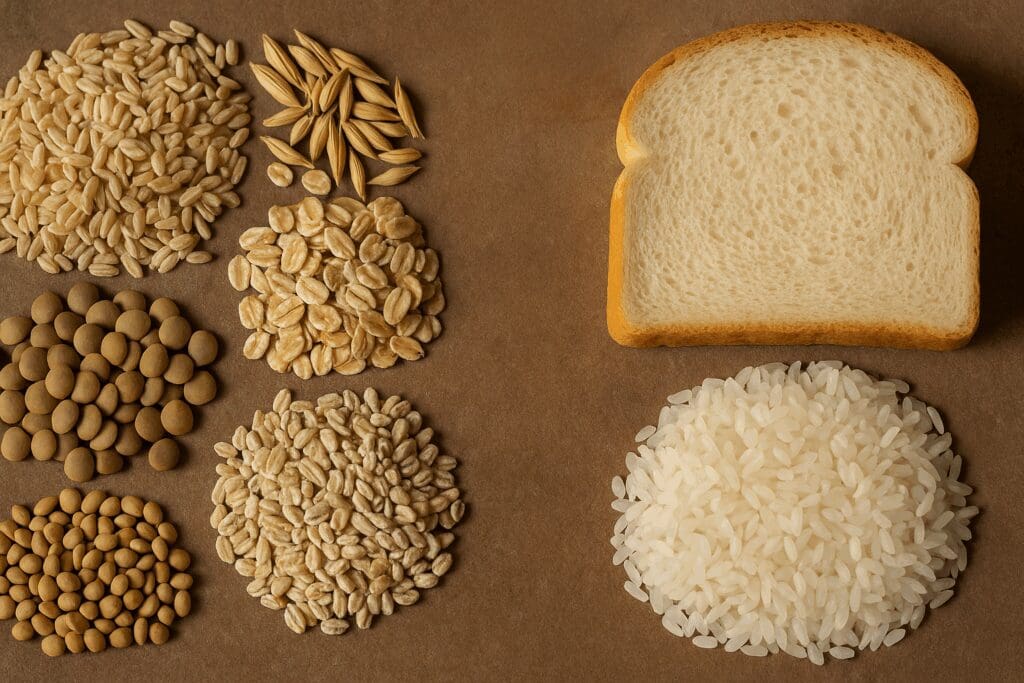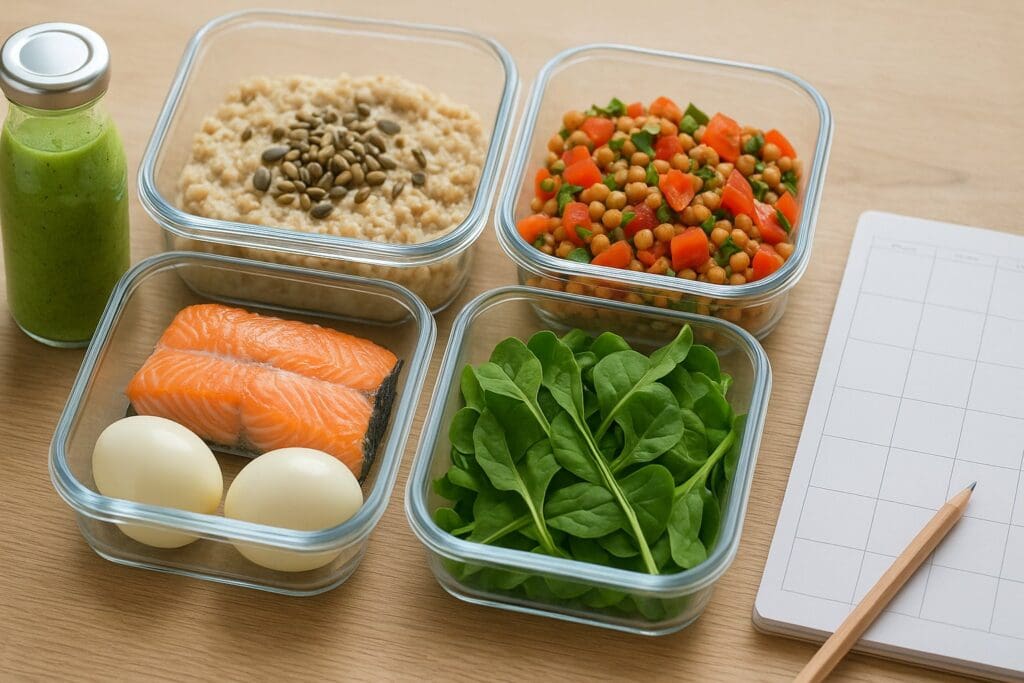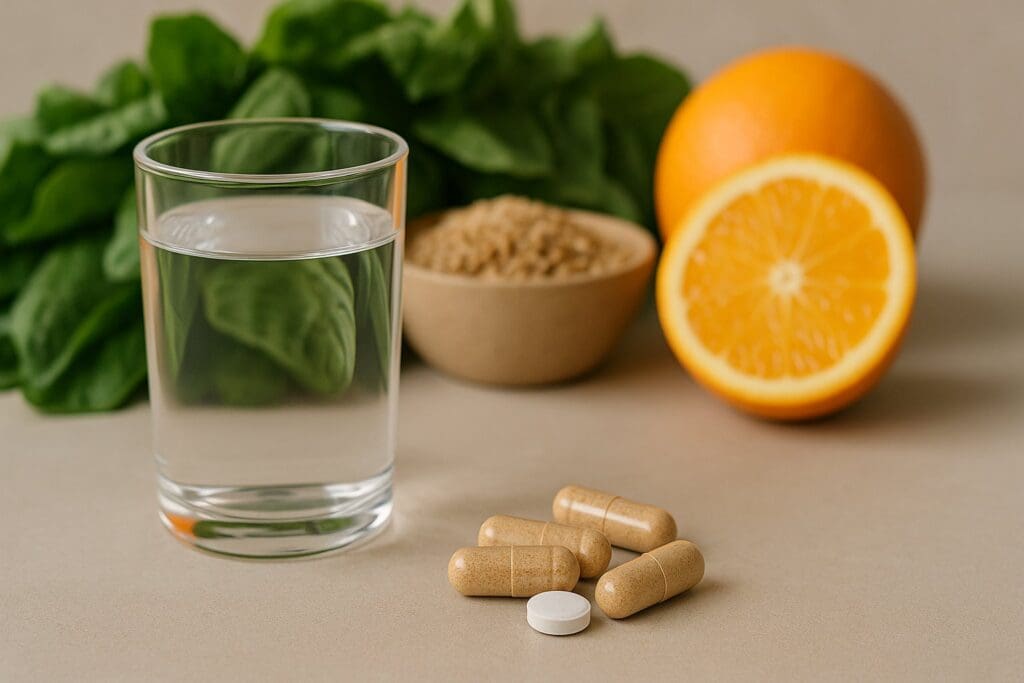Pregnancy is a unique physiological journey that places increased demands on a woman’s body, requiring careful attention to nutritional intake to ensure both maternal and fetal health. Among the essential nutrients, vitamin B1—also known as thiamine—plays a critical role in energy metabolism, neurological development, and muscular function. Knowing how to get B1 for maternity wellness can significantly support a healthy pregnancy and postnatal recovery. Thiamine is indispensable for converting carbohydrates into usable energy, supporting the heart and nervous system, and fostering optimal brain development in the growing fetus. Yet, it is often overlooked in prenatal care discussions. This article explores in depth the critical importance of vitamin B1, how to naturally and effectively obtain it, and what expecting mothers should consider in balancing their thiamine intake for overall wellness.
You may also like: 7 Vital Reasons to Choose Yogurt for Pregnant Women’s Diet
Understanding the Role of Thiamine in Pregnancy
Thiamine is a water-soluble vitamin that serves as a coenzyme in carbohydrate metabolism, which is essential during pregnancy when energy demands are elevated. This vitamin facilitates the breakdown of glucose, the primary fuel for both the mother and developing fetus. Additionally, thiamine is vital for proper nerve function and plays a supporting role in neurotransmitter synthesis. The brain and nervous system of the fetus, particularly during the first trimester, rely heavily on these processes to ensure proper cognitive and structural development.
Deficiency in thiamine during pregnancy can have serious repercussions. It can lead to complications such as hyperemesis gravidarum, a condition characterized by severe nausea and vomiting that can deplete thiamine stores rapidly. In extreme cases, deficiency can result in Wernicke’s encephalopathy, a neurological condition that poses a danger to both the mother and baby. Thus, understanding the biological necessity of thiamine is the first step in developing a strategic approach to maternity nutrition.
Recommended Daily Intake and Physiological Changes
The daily recommended intake of thiamine for pregnant women varies slightly from that of non-pregnant adults. According to the National Institutes of Health (NIH), adult women require about 1.1 mg of thiamine daily, but during pregnancy, this recommendation increases to approximately 1.4 mg to meet the heightened metabolic needs. This slight increase underscores the importance of dietary vigilance.
During pregnancy, several physiological changes affect nutrient absorption and metabolism. Hormonal shifts can alter gastrointestinal function, potentially impacting thiamine absorption from food. Moreover, increased blood volume and the growing demands of the fetus can drain maternal nutrient stores more rapidly. Recognizing these physiological shifts emphasizes why thiamine must be obtained regularly and in sufficient amounts, not merely through occasional supplementation but also through daily diet and conscious planning.

How to Get B1 for Maternity Wellness Through Diet
Knowing how to get B1 for maternity wellness primarily involves understanding and integrating thiamine-rich foods into your daily meals. Whole, unprocessed foods often serve as the best b1 sources because they retain more of their nutritional value compared to refined or processed options. For instance, whole grains such as brown rice, oats, and barley are excellent examples of foods that contain vitamin B1. They maintain their bran and germ layers, which are rich in thiamine and other B vitamins.
Legumes are another vital category to consider. Lentils, black beans, and navy beans are packed with thiamine, making them ideal for expecting mothers seeking plant-based b1 food sources. These foods also contribute to protein intake, fiber, and essential minerals, offering a well-rounded nutritional profile. For animal-based sources, pork stands out as one of the best foods with B1 thiamine. A modest serving of lean pork can significantly bolster thiamine intake while contributing essential protein and iron.
Fortified cereals also play a strategic role in boosting thiamine levels. Many breakfast cereals are enriched with vitamin B1, offering a convenient option for individuals with dietary restrictions or morning appetite fluctuations. Nutritional yeast, sunflower seeds, and trout round out the list of foods high in vitamin B1 that can be incorporated into meals, smoothies, or snacks throughout the day. Maintaining a diverse, colorful plate can ensure you are getting sufficient thiamine naturally and deliciously.

The Science Behind Foods High in Thiamine
Delving deeper into the nutritional science of foods high in thiamine reveals why certain items stand out as more effective. Thiamine is often found in higher concentrations in the outer layers of grains and seeds, which are typically removed during the refining process. This is why refined products such as white rice or white bread contain significantly less vitamin B1 unless they are fortified. Understanding what form of B1 is found in food can help individuals make informed choices. In its natural form, thiamine is typically found as thiamine pyrophosphate, the active coenzyme required for metabolic reactions.
Cooking methods also influence the availability of vitamin B1 in food. Because thiamine is water-soluble and heat-sensitive, it can be destroyed by overboiling or prolonged cooking. Steaming or lightly sautéing vegetables, soaking legumes minimally before cooking, and consuming raw or lightly toasted seeds can help preserve their B1 content. Awareness of these nuances ensures that even well-intentioned diets don’t fall short due to food preparation practices.

Practical Strategies on How to Get B1 for Maternity Wellness
Implementing practical strategies for how to get B1 for maternity wellness requires intentionality. First, planning meals around thiamine-rich ingredients is essential. For example, incorporating a breakfast of fortified oatmeal topped with sunflower seeds and a hard-boiled egg offers a balanced, thiamine-rich start to the day. A mid-morning snack of hummus and whole-grain crackers, followed by a lunch featuring a lentil salad with a side of grilled trout, continues to deliver vitamin B1 throughout the day.
Hydration also plays a supportive role. While it does not directly influence thiamine content, proper hydration supports optimal digestion and nutrient absorption. Drinking water with meals and avoiding excessive intake of caffeine or alcohol, both of which can interfere with thiamine utilization, is advisable. Additionally, spacing out thiamine-rich meals throughout the day ensures a steady supply to meet ongoing metabolic demands.
For women experiencing nausea or food aversions, smoothies offer a practical solution. Combining spinach, banana, nutritional yeast, and fortified plant-based milk can create a thiamine-packed, easily digestible beverage that supports daily intake without requiring large meals. The key is consistency, ensuring that thiamine intake remains steady even during fluctuating appetites or dietary sensitivities.
Understanding What Foods Have B1 Thiamine and Their Broader Benefits
Exploring what foods have B1 thiamine often uncovers broader nutritional advantages. For instance, sunflower seeds not only contain thiamine but are also rich in healthy fats and selenium, which support immune function. Legumes like black beans offer dietary fiber that helps prevent pregnancy-related constipation, a common concern in the second and third trimesters.
Pork, when consumed in moderation, provides heme iron, which is more readily absorbed than plant-based sources. This is particularly relevant in preventing anemia, a condition common in pregnancy that can compound fatigue and cognitive sluggishness. Foods that have B1 often serve dual or even triple roles in promoting overall wellness, which underscores the importance of a varied and nutrient-dense diet.
Furthermore, fortified foods offer convenience without sacrificing nutritional value. While some critics view fortified products as synthetic or inferior, they can be instrumental in preventing deficiencies, particularly for individuals with dietary limitations or medical conditions affecting nutrient absorption. Choosing cereals and breads fortified with B vitamins, including thiamine, can round out the diet and serve as a safety net against potential gaps.

Sources of Thiamine in Prenatal Supplements
In addition to dietary sources, prenatal vitamins frequently contain thiamine to ensure consistent intake. While whole foods remain the preferred source due to their synergistic effects and additional nutrients, supplements play a vital role when dietary intake is inadequate. Prenatal supplements typically contain thiamine in the form of thiamine hydrochloride or thiamine mononitrate, both of which are stable and easily absorbed by the body.
It is essential to review supplement labels and consult with a healthcare provider to determine whether your current prenatal vitamin meets your individual needs. Women with hyperemesis gravidarum or other malabsorption conditions may require additional supplementation. In such cases, thiamine injections or higher-dose oral supplements may be prescribed. Understanding the interplay between dietary and supplemental sources of thiamine allows for a comprehensive, individualized approach to nutrition during pregnancy.
How Much Thiamine Is Too Much During Pregnancy?
A common concern among expectant mothers is whether it is possible to consume too much thiamine. While the upper limit for thiamine has not been firmly established due to its low toxicity, moderation is still advised. The body typically excretes excess thiamine through urine, minimizing the risk of toxicity. However, taking megadoses of vitamin B1 without medical supervision is not recommended, particularly in the absence of a diagnosed deficiency.
Women wondering, “Is it ok to take 6 B1 vitamins a day?” should exercise caution. Such high intake could lead to imbalances with other B vitamins or obscure underlying medical conditions. Most prenatal supplements are carefully formulated to provide optimal levels of essential nutrients, including thiamine, without risking excess. When in doubt, consulting a registered dietitian or obstetrician can provide clarity and personalized guidance.
How Can I Increase My Vitamin B1 Naturally?
If you’re asking, “How can I increase my vitamin B1 naturally?” the answer lies in a combination of dietary diversity, smart cooking, and routine meal planning. Prioritize whole grains over refined grains and choose legumes, nuts, and seeds as frequent staples. Experiment with global cuisines that naturally emphasize thiamine-rich foods, such as lentil stews, pork-based stir-fries, and whole-grain porridges.
Preserving thiamine during cooking is just as important as selecting the right ingredients. Avoid discarding the cooking water from legumes and grains, as it may contain dissolved B vitamins. Where possible, use methods like steaming or pressure cooking to minimize nutrient loss. Pairing thiamine-rich foods with other nutrients, such as vitamin C from citrus fruits, may enhance overall absorption and support synergistic health effects.
Balancing Your Intake of B Vitamins for Holistic Maternity Support
While thiamine is a crucial nutrient, it does not work in isolation. The B vitamin complex—including B2 (riboflavin), B3 (niacin), B6 (pyridoxine), B9 (folate), and B12 (cobalamin)—functions synergistically to support energy metabolism, neurological development, and cardiovascular health. Ensuring balanced intake of all B vitamins is essential for maximizing the benefits of each individual nutrient.
For example, vitamin B6 is well-known for reducing nausea and morning sickness, while folate is critical in preventing neural tube defects. Vitamin B12 works alongside thiamine to support red blood cell formation and cognitive function. Therefore, when exploring sources of vitamin B1, it is equally important to assess whether your overall diet provides a robust range of B vitamins. Consuming foods that contain a spectrum of B vitamins, such as eggs, dairy, green leafy vegetables, and lean meats, can provide a comprehensive nutritional foundation for pregnancy.
Recognizing Symptoms of Thiamine Deficiency
Even with careful planning, some women may experience symptoms of thiamine deficiency due to medical conditions, poor absorption, or severe nausea. Early signs include fatigue, irritability, muscle weakness, and poor concentration—all of which can overlap with common pregnancy experiences. However, more pronounced symptoms such as tingling sensations, shortness of breath, and unsteady gait may warrant medical attention.
Understanding these signs and knowing when to consult a healthcare provider can prevent complications from escalating. Pregnant women are particularly vulnerable due to the increased demand for nutrients and the body’s shifting capacity to absorb and utilize them. Routine bloodwork, symptom tracking, and open communication with healthcare professionals can help identify and correct deficiencies early, ensuring a safer and more comfortable pregnancy experience.
Choosing the Best B1 Sources Based on Your Lifestyle
Different lifestyles necessitate different nutritional strategies. For vegetarian or vegan mothers, understanding which plant-based foods have B1 thiamine becomes crucial. Fortified plant milks, legumes, and nutritional yeast can offer substantial thiamine without relying on animal products. For omnivores, lean pork and fish like trout offer excellent sources of B1 alongside other nutrients such as omega-3 fatty acids.
Busy lifestyles may benefit from meal prepping or using thiamine-fortified convenience foods that do not compromise nutritional integrity. Smoothies, overnight oats, and grain bowls can be prepared in advance and tailored to include foods high in thiamine. Creating a lifestyle that supports consistent thiamine intake, regardless of dietary restrictions or time constraints, can dramatically improve maternal health outcomes.
The Long-Term Benefits of Prioritizing Thiamine Intake
Prioritizing thiamine intake during pregnancy does more than address immediate nutritional needs. It sets the stage for long-term wellness for both the mother and child. Adequate thiamine supports postpartum recovery by replenishing depleted stores, restoring energy, and promoting mental clarity—key aspects for new mothers adjusting to the demands of infant care.
For the child, maternal thiamine intake influences fetal brain development, possibly affecting cognitive outcomes later in life. Ensuring that the developing nervous system receives adequate support during gestation may offer protective effects against certain neurological disorders. These long-term benefits underscore the need to integrate thiamine into broader conversations about maternal and pediatric health.
Frequently Asked Questions About Vitamin B1 and Maternity Wellness
What are some creative ways to include foods high in vitamin B1 in a plant-based pregnancy diet?
Plant-based diets can be exceptionally rich in vitamin B1 if carefully curated. One effective strategy is to prepare overnight oats with fortified almond milk, chia seeds, and sliced bananas, which makes for a thiamine-rich, energy-boosting breakfast. Incorporating lentil-based soups with carrots, celery, and quinoa delivers both flavor and a concentrated dose of vitamin B1. Nutritional yeast, often used as a cheesy-tasting topping, can be sprinkled on popcorn, pasta, or avocado toast to boost intake. Stir-fries featuring tofu, green peas, and sunflower seeds sautéed in sesame oil provide a satisfying dinner while enriching the body with multiple sources of thiamine. These diverse meals ensure you’re getting foods high in thiamine without relying on animal products or synthetic supplements.
How to Get B1 for Maternity Wellness While Managing Morning Sickness
When morning sickness limits your dietary choices, prioritizing easily digestible foods that still contain vitamin B1 is crucial. Cold foods, like fortified cereal with plant-based milk or chilled smoothies with oats and spinach, can often be more tolerable during bouts of nausea. Frozen fruit-based popsicles made from bananas, oranges, and mangoes not only soothe nausea but offer trace amounts of vitamin B1 and other B vitamins. Ginger-infused broth with white beans or quinoa provides hydration, warmth, and B1 food sources in a soothing form. Incorporating thiamine through multiple small snacks throughout the day—rather than large meals—can ease discomfort while still supporting adequate intake. Remember, consistency is more important than volume when morning sickness becomes persistent.
What are the best B1 sources for people with gluten intolerance or celiac disease during pregnancy?
For expectant mothers avoiding gluten, it’s essential to focus on naturally gluten-free foods that contain vitamin B1. Brown rice, wild rice, and gluten-free oats are foundational sources that maintain nutrient density without compromising digestive health. Quinoa and buckwheat also provide thiamine and double as excellent sources of protein and iron, both essential in pregnancy. Legumes such as lentils, chickpeas, and kidney beans are ideal as they are naturally gluten-free and full of B1. Fortified gluten-free cereals and breads can bridge nutritional gaps when whole foods are not enough. With mindful selection, a gluten-free pregnancy diet can be just as rich in foods high in B1 as a standard diet.
How can I increase my vitamin B1 naturally without supplements during pregnancy?
If you’re asking, “how can I increase my vitamin B1 naturally,” start by adjusting your grocery list and meal prep strategies. Focus on incorporating legumes, nuts, seeds, and whole grains into every meal—these are among the most effective natural sources of vitamin B1. Diversify your protein sources with plant-based options like tempeh and edamame, which also contain thiamine. Cooking techniques matter too: opt for steaming or light sautéing instead of boiling to preserve water-soluble vitamins. Preparing your meals from scratch with unrefined ingredients ensures higher thiamine retention, especially when compared to processed or convenience foods. Eating seasonally and locally can also improve freshness and nutrient quality, enhancing the natural availability of vitamin B1 in your diet.
Is it OK to take 6 B1 vitamins a day during pregnancy, and what are the risks?
While thiamine is water-soluble and excess amounts are typically excreted through urine, taking six B1 supplements daily should only be done under medical supervision. Excessive supplementation could mask symptoms of other deficiencies or cause imbalances within the B vitamin complex. Additionally, high-dose supplementation may not provide added benefits unless a deficiency has been diagnosed, and it may alter how other nutrients are absorbed. The standard approach should be to assess your intake from food sources of vitamin B1 before considering high-dose supplements. For most pregnant women, a well-rounded diet complemented by a quality prenatal vitamin offers sufficient thiamine, avoiding the need for extreme dosages unless advised otherwise.
What makes certain foods with B1 thiamine better absorbed than others?
The bioavailability of vitamin B1 can vary based on the food matrix, preparation method, and presence of anti-nutrients. For example, thiamine in animal products like pork and trout is highly bioavailable due to minimal interference from plant compounds. In contrast, foods with B1 from plant sources may contain phytates or tannins that bind to the vitamin and reduce its absorption. Soaking, sprouting, or fermenting grains and legumes can reduce these anti-nutrients and enhance the availability of thiamine. Cooking methods also play a role—steaming or baking retains more vitamin B1 compared to prolonged boiling. Eating a diverse array of thiamine rich foods helps ensure that even if absorption varies, overall intake remains sufficient.
What form of B1 is found in food, and how does it differ from supplements?
In natural food sources, thiamine usually appears as thiamine pyrophosphate or thiamine monophosphate, which are biologically active coenzymes. These forms are bound within the food’s cellular structure and released during digestion, absorbed primarily in the small intestine. Supplements, on the other hand, often contain thiamine hydrochloride or thiamine mononitrate—synthetic but easily absorbed forms. While both food-based and supplemental thiamine are effective, food sources of vitamin B1 provide additional co-nutrients that support metabolism and enhance the vitamin’s function. Moreover, consuming whole foods reduces the risk of overconsumption and supports a balanced intake of the broader B-complex spectrum.
How to Get B1 for Maternity Wellness When Dealing with Gestational Diabetes
Managing gestational diabetes involves balancing blood sugar while maintaining optimal nutrient intake, including vitamin B1. Many of the top foods for thiamine—such as legumes, seeds, and lean proteins—have low glycemic loads, making them ideal for blood sugar regulation. For instance, a quinoa and black bean salad with avocado provides fiber, protein, and ample B1 without spiking blood glucose levels. Additionally, pairing foods that contain vitamin B1 with healthy fats slows digestion and supports stable energy. Timing meals and snacks to coincide with your insulin or glucose-monitoring routine helps ensure nutrients like thiamine are properly utilized during metabolic peaks. With strategic planning, you can manage gestational diabetes while optimizing your intake of foods that have B1.
What’s the long-term impact of insufficient B1 during pregnancy on child development?
Emerging research suggests that chronic thiamine deficiency during gestation may influence a child’s cognitive and motor development. Because vitamin B1 plays a role in neurogenesis and energy metabolism, its scarcity could impact brain volume or functional connectivity in infancy and beyond. Children born to mothers with marginal B1 status may be at increased risk for delayed speech, reduced executive function, or even learning difficulties later in childhood. Animal studies have indicated that low maternal thiamine can affect memory and behavior in offspring, although more human-based research is ongoing. Ensuring adequate intake of foods that contain vitamin B1 during pregnancy may offer not just short-term benefits but also a neurological foundation that supports lifelong learning and development.
What B vitamin is thiamine, and why is it foundational to maternal mental health?
Thiamine is also known as vitamin B1, and it plays a foundational role in neurotransmitter synthesis and brain energy metabolism. During pregnancy, hormonal fluctuations and nutrient demands can affect mental clarity, mood, and emotional resilience. Ensuring an adequate supply of vitamin B1 supports serotonin and dopamine pathways, which are critical for emotional well-being. Studies have linked low thiamine levels to irritability, depression, and cognitive fog—symptoms that can intensify postpartum if not addressed. By incorporating vitamin B1 foods regularly into your diet, you support both your neurological health and the emotional bandwidth required during pregnancy and early motherhood. This proactive approach can contribute to a smoother perinatal mental health journey, underscoring the broader psychological value of sources of thiamine.
Conclusion: How to Get B1 for Maternity Wellness and Why It Matters
In the intricate landscape of pregnancy nutrition, understanding how to get B1 for maternity wellness emerges as a critical yet often understated priority. This essential vitamin supports a multitude of biological functions, from energy production and neurological integrity to fetal brain development and maternal recovery. Its importance cannot be overstated, particularly in a phase of life where nutritional adequacy profoundly influences both immediate and long-term health outcomes.
By integrating foods high in vitamin B1 into daily meals, being mindful of cooking methods, considering quality supplements when needed, and aligning intake with broader B vitamin support, expectant mothers can confidently navigate the demands of pregnancy with nutritional foresight. Awareness and education around thiamine-rich foods, whether plant- or animal-based, empower women to make choices that benefit not just their current well-being but also that of their growing child.
Ultimately, prioritizing thiamine is not just about meeting a dietary requirement. It is a gesture of proactive wellness, an affirmation of the vital role that informed, intentional nutrition plays in the journey toward motherhood. With the right knowledge and practical strategies, getting enough B1 becomes not only achievable but transformative—for both mother and baby alike.



